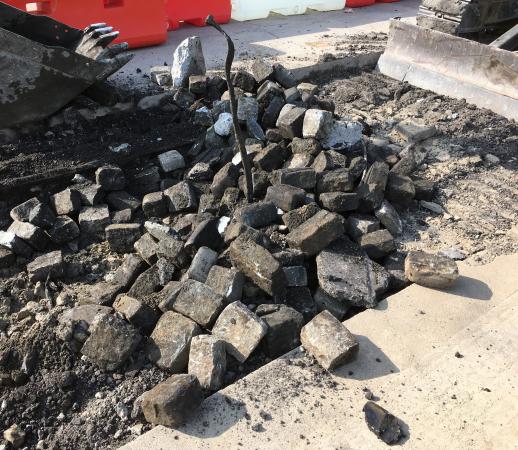
An MSD construction project designed to reduce combined sewer overflows offered a surprising return as it unearthed a forgotten piece of Louisville history now to be used as a building block for a future project in the city.
Historic cobblestones were discovered by MSD during excavation for the Clifton Force Main Project — part of the Clifton Heights Combined Sewer Overflow (CSO) Basin. On Story Avenue — between Frankfort Avenue and Cable Street — MSD contractor TSI Construction found trolley tracks that were not indicated on the maps, and three layers of cobblestone beneath the tracks, said Meskerem Eshetu, the MSD engineer overseeing the project. The stones were presumably used for paving roads, and then the trolley track was installed over the original cobblestone road.
The recovered stones were tested for contaminants and deemed safe for reuse. MSD has donated 15-20 loads of stone so far. Clinton Deckard, project manager for the Waterfront Botanical Gardens, said the cobblestones will be incorporated in sidewalks and stone edgings at the gardens.
Executive Director of Waterfront Botanical Gardens Kasey Maier states, “It is exciting to be a part of preserving Louisville’s history. This lets us walk on the same stones as our predecessors, and lets that piece of history continue to persevere.” The Waterfront Botanical Gardens broke ground in September at Frankfort Avenue and River Road.
The Clifton Heights Combined Sewer Overflow (CSO) Basin will capture seven million gallons of combined sewer overflow, in an average rainfall year. This underground-covered basin will offer the public and Beargrass Creek protection from combined sewer overflows during periods of wet weather. When completed, the project will be largely invisible to the public.
Underground storage is part of MSD's larger endeavor to prevent sewage from overflowing into Louisville's waterways. These underground storage areas retain the mixture of rainwater and sewage until the rain subsides and capacity is available for treatment, then gradually release it back into the sewer system.


